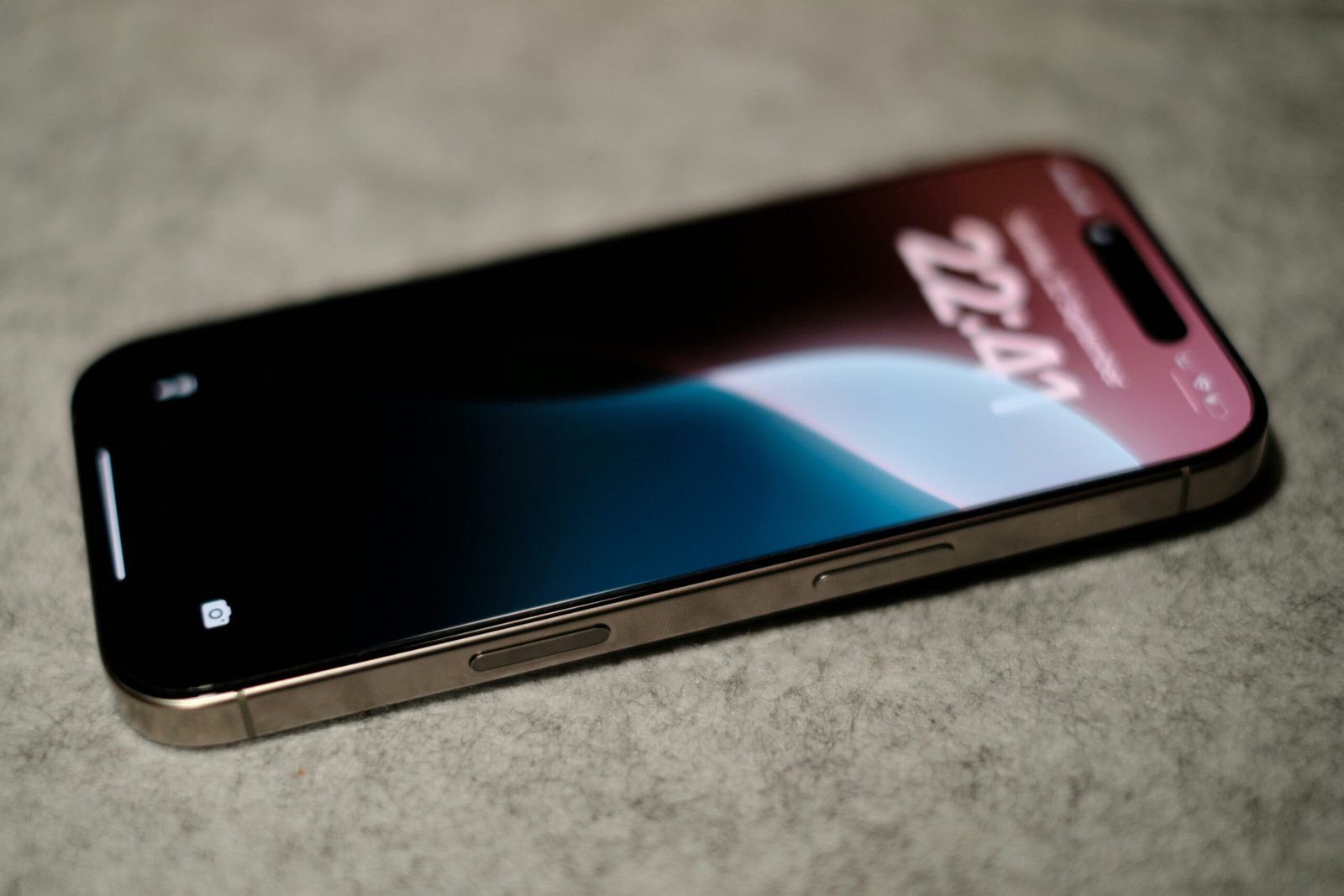Introduction to Android and iOS
Android and iOS are the two leading mobile operating systems that dominate the smartphone and tablet markets today. Developed by Google, Android was first released in 2008 and has since evolved significantly, supporting a wide range of devices from various manufacturers. This adaptability has made Android the most widely used mobile operating system in the world, holding a substantial share of the global market. The open-source nature of Android allows manufacturers to customize the interface and features, leading to a diverse ecosystem that appeals to a broad audience.
On the other hand, iOS, developed by Apple, emerged in 2007 with the introduction of the first iPhone. Renowned for its user-friendly interface and consistent performance, iOS is exclusive to Apple devices, including the iPhone, iPad, and iPod Touch. This closed ecosystem enables Apple to maintain strict control over the user experience, ensuring that iOS devices receive timely updates and high-quality applications. Despite being less widespread than Android, iOS remains one of the most popular operating systems, particularly in regions like North America and Western Europe, where it consistently competes with Android in terms of market share.
Both Android and iOS have undergone significant transformations over the years, continually adapting to technological advancements and user preferences. These operating systems now incorporate a wide array of features, such as advanced security measures, artificial intelligence, and cloud integration, significantly enhancing their functionality. As they move toward 2025, both Android and iOS are expected to evolve further, introducing new capabilities and addressing the changing needs of users, thereby solidifying their positions as the dominant platforms in the mobile landscape.
User Interface and Experience
The user interface (UI) and overall experience play a crucial role in determining the preferences of users when it comes to mobile operating systems. Android and iOS, the two dominant platforms in this market, approach design and functionality in notably different ways. Both systems have distinct design philosophies that are evident in their aesthetics and usability.
Android is often praised for its customization options. Users can personalize their home screens with widgets, app icons, and various layouts, allowing for a unique experience tailored to individual preferences. This flexibility is a significant element of Android’s appeal, as it grants users the freedom to modify their devices to align with their visual and functional desires. Furthermore, the open-source nature of the platform enables developers to create diverse apps that contribute to the richness of the Android ecosystem, enhancing the overall user experience.
In contrast, iOS prioritizes simplicity and cohesion in its design. The operating system employs a uniform grid layout, ensuring that all applications have a similar visual style. This approach enhances usability, as it reduces the learning curve for new users. iOS also features a consistent navigation style across apps, which aids in the swift mastery of the system. While customization options are more limited compared to Android, the trade-off is a seamless experience that appeals to those who prefer straightforward interaction without the complexity of excessive configuration.
Both platforms implement user experience elements such as haptic feedback and gestures, but they differ significantly in execution. Android supports a variety of gestures and shortcuts that can be tailored by the user, while iOS offers a more standardized set of options that promote ease of use across a broader user base. Understanding these differences in user interface and experience is essential in evaluating which platform offers the best fit for individual users depending on their needs and preferences.
App Ecosystem: Availability and Quality
The app ecosystems of Android and iOS reveal distinct differences in availability and quality that significantly impact user experience. As of 2023, the Google Play Store hosts over 3 million applications, while the Apple App Store offers approximately 2 million. This disparity indicates that Android generally provides a broader range of apps across various categories, attracting a diverse audience with varying needs. However, it is essential to consider not just the quantity, but also the quality and the nature of applications available on each platform.
Quality control measures are notably more stringent on iOS. Apple implements a rigorous review process for applications before they become available for download on the App Store, which reduces the likelihood of malware, bugs, and low-quality interfaces. Consequently, users often report a more polished experience with iOS applications, which can lead to greater satisfaction. In contrast, Android’s open nature allows for a more extensive range of apps including experimental and niche offerings; however, this can result in variability in quality, with some applications lacking the same level of polish as their iOS counterparts.
Moreover, certain types of applications tend to be more predominant on each operating system. For example, gaming apps often thrive on both platforms, but iOS applications may receive priority due to exclusive titles or advanced graphics performance in the Apple environment. On the other hand, Android’s flexibility enables developers to create innovative solutions, particularly within customization and productivity apps, catering to users who prefer a more personalized experience.
In summary, while the app ecosystem for Android offers a broader quantity of applications, iOS stands out for its focus on quality. Users choose between the two platforms based on their priorities in app availability or the assurance of a refined user experience.
Hardware Compatibility and Performance
In the ever-evolving landscape of mobile technology, hardware compatibility and performance play pivotal roles in shaping user experience. The two predominant operating systems, Android and iOS, exhibit distinct approaches regarding hardware interaction and performance consistency. Android, being an open-source platform, supports a vast array of devices across numerous manufacturers. This diversity allows for an impressive range of hardware configurations, from budget smartphones to flagship devices boasting cutting-edge technology. However, this variability can lead to inconsistent performance. Users may experience disparities in speed and responsiveness based on the hardware capabilities of their chosen Android device.
Conversely, iOS operates exclusively on Apple hardware, resulting in a tighter integration between the operating system and devices such as the iPhone and iPad. This integration fosters optimized performance, as Apple can meticulously tailor the software to work seamlessly with its hardware. Consequently, iOS users often report a consistently smooth experience across devices, with fewer performance hiccups compared to some of the lower-end Android devices.
Looking ahead to 2025, both operating systems are anticipated to introduce significant hardware innovations that could enhance performance further. Apple is expected to continue refining its custom silicon, likely leading to faster processors and better energy efficiency. On the other hand, Android manufacturers are racing to implement advanced technologies, such as 5G integration and improved AI capabilities within their devices. Such enhancements are poised to redefine mobile performance, enabling richer user experiences and more robust functionality.
Overall, while both Android and iOS have unique strengths and challenges concerning hardware compatibility and performance, the advancements on the horizon for 2025 promise exciting developments that will impact user experience profoundly.
Security and Privacy Features
In the domain of mobile operating systems, security and privacy features are paramount. Both Android and iOS have evolved considerably over the years to better protect users’ data and uphold their privacy. As of 2023, both platforms have implemented various mechanisms to safeguard sensitive information, although their approaches significantly differ.
Android, developed by Google, utilizes a combination of hardware and software-based security measures. One of the significant features is the Google Play Protect system, which scans apps for malicious behavior and performs regular checks on devices for threats. Additionally, Android’s permission model gives users control to grant or deny access to their data, although this process can sometimes be burdensome due to frequent permission requests. In recent updates, Android has enhanced its privacy dashboard, allowing users to monitor app permissions and data usage more effectively.
On the other hand, iOS, developed by Apple, is often regarded as a leader in mobile security. Its closed ecosystem ensures strict control over app distribution via the App Store, drastically reducing the chances of malware infiltration. iOS employs a unique feature known as “App Tracking Transparency,” which requires apps to obtain user consent before tracking their activity across other applications. This has fostered a more privacy-centric environment for users. Moreover, iOS employs end-to-end encryption for iMessages and FaceTime, fortifying the security of communications on the platform.
Looking ahead to 2025, enhancements in security measures on both platforms are anticipated. Android may expand its biometric capabilities and enhance data encryption protocols, while iOS is likely to continue refining its privacy frameworks, possibly introducing even more intricate user consent mechanisms. As users become increasingly aware of the significance of security and privacy, both Android and iOS will be under pressure to innovate and provide robust protection against evolving threats.
Integration with Other Devices and Services
The integration of operating systems with other devices and services plays a crucial role in defining user experience, especially as we move towards 2025. Both Android and iOS have made significant strides in connecting with an array of smart home devices, wearables, and desktop operating systems, yet they employ different approaches and philosophies. Android, developed by Google, offers a more open ecosystem, allowing users to connect seamlessly with a wide range of smart devices from various manufacturers. The Android platform supports numerous IoT (Internet of Things) devices, and users can utilize Google Assistant to manage these integrations effortlessly. The flexibility in compatibility makes Android a preferred choice for consumers who wish to combine products from different brands in their smart homes.
On the other hand, iOS, created by Apple, emphasizes a more controlled and cohesive ecosystem. The integration extends smoothly across Apple devices, such as the iPhone, iPad, Mac, Apple Watch, and Apple TV. Handoff, AirDrop, and Continuity features create a seamless user experience, allowing for easy transitions and data sharing between devices. While Apple’s strategy prioritizes interoperability within its own ecosystem, it may limit integration with third-party devices compared to Android. However, the ease with which users can control their home automation through HomeKit showcases Apple’s commitment to enhancing user experience.
As we look forward to future innovations in 2025, both Android and iOS are expected to enhance their device integration capabilities. Android may further expand its compatibility with more third-party devices, while iOS could introduce new features to improve interoperability with non-Apple products. Ultimately, the choice between Android and iOS regarding integration will depend on user preference, with each platform catering to different needs and lifestyles, thus continuing to shape the digital landscape.
Customization and Personalization Options
Customization and personalization have become significant aspects of smartphone usage, catering to the diverse preferences of users. Both Android and iOS offer unique features tailored for individuals who wish to make their devices reflect their personal style and functionality preferences. One key advantage of Android is its flexibility; users can change the appearance of their devices extensively. From themes that alter the overall look to widgets that occupy home screen real estate, Android allows users to modify their experience to a great extent. The availability of various third-party applications from the Google Play Store further enhances this capability, enabling users to employ a range of customization tools to create an interface that’s completely unique.
Conversely, iOS has maintained a more uniform aesthetic, with users historically having fewer options for deep customization compared to Android. However, recent updates have brought about significant enhancements in personalization. Widgets, introduced in iOS 14, now allow users to display crucial information directly on their home screens, albeit in a more controlled and cohesive manner. Apple’s emphasis on simplicity and minimalism provides a distinctive charm, yet it may not fulfill the desires of users who crave complete control over their device’s appearance.
Looking ahead to 2025, both platforms are expected to continue evolving in terms of customization. Android may further embrace innovative customization options, perhaps harnessing AI to suggest personalized setups based on usage patterns. Meanwhile, iOS might introduce additional options that amplify user personalization while maintaining its characteristic simplicity. As mobile technology advances and user expectations grow, the competition between Android and iOS will likely intensify, pushing both platforms to continually refine their customization features to cater to their respective audiences.
Cost and Market Accessibility
The cost and market accessibility of smartphones have a significant influence on consumer choices, particularly when comparing the Android and iOS platforms. Android devices are known for their extensive price range, catering to various socioeconomic groups. Users can find budget models priced below $200, mid-range devices around $300 to $600, and flagship models exceeding $1,000. This variety ensures that consumers with different financial capabilities can access Android technology, leading to its widespread adoption globally. Availability of Android devices is extensive, with manufacturers from various countries contributing to a diverse offering. Consumers around the world benefit from this flexibility, as they can choose from offerings that meet both their budgetary constraints and specific feature requirements.
Conversely, Apple’s iOS devices, primarily represented by the iPhone, are positioned as premium products with a higher starting price, typically around $699 for the base model, going up to more than $1,500 for high-end configurations. This price structure appeals to a specific market segment primarily characterized by higher income levels and those looking for luxury. The limited range of available models can restrict consumer choice; however, Apple often focuses on high quality, innovative features, and a cohesive ecosystem that enhances user experience. Additionally, iOS devices generally enjoy a robust resale value, which can partially alleviate the initial cost burden.
When considering market accessibility, Android devices outnumber iOS in many emerging markets, offering options that cater to consumers who prioritize affordability without sacrificing essential smartphone functions. This accessibility allows Android to maintain a dominant share in regions with varying economic conditions. As we approach 2025, the implications of these pricing strategies and availability will likely continue to shape market trends, consumer behavior, and competition between the two operating systems. Ultimately, the price and accessibility of Android and iOS devices will remain critical factors for users when making informed purchasing decisions.
Future Trends: What to Expect in 2025
As we look toward 2025, both Android and iOS are expected to undergo significant transformations, driven by innovations in technology and shifting user demands. Anticipating the future of these operating systems requires examining several emerging trends that are poised to shape the mobile landscape.
One notable trend is the continued integration of artificial intelligence (AI) and machine learning within mobile platforms. Both Android and iOS are increasingly leveraging AI to enhance user experiences, from improved voice recognition to personalized recommendations. By 2025, we can expect deeper integration of AI in various applications, resulting in smarter and more intuitive interactions with devices. This trend will not only enhance efficiency but also streamline tasks, allowing users to optimize their daily routines effortlessly.
Furthermore, advancements in 5G technology are expected to fundamentally change how users interact with their mobile devices. With increased data speeds and lower latency, applications requiring real-time connectivity, such as augmented reality (AR) and virtual reality (VR), are likely to proliferate. This evolution will augment the mobile experience, providing users with more immersive content and promoting a shift towards cloud-based processing, which will be significant for both Android and iOS users.
Moreover, privacy and security remain paramount concerns for users. Both platforms are increasingly emphasizing robust security features to safeguard user data, reflecting a growing awareness of cyber threats. By 2025, we may see enhanced biometric authentication methods and more transparent data usage policies, responding to user expectations for greater control over personal information.
In conclusion, as Android and iOS continue to evolve, users can expect a dynamic interplay of technological advancements. The landscape of mobile interaction will be shaped by AI, 5G connectivity, and an unwavering commitment to privacy and security, framing a promising future for smartphone users in 2025.



